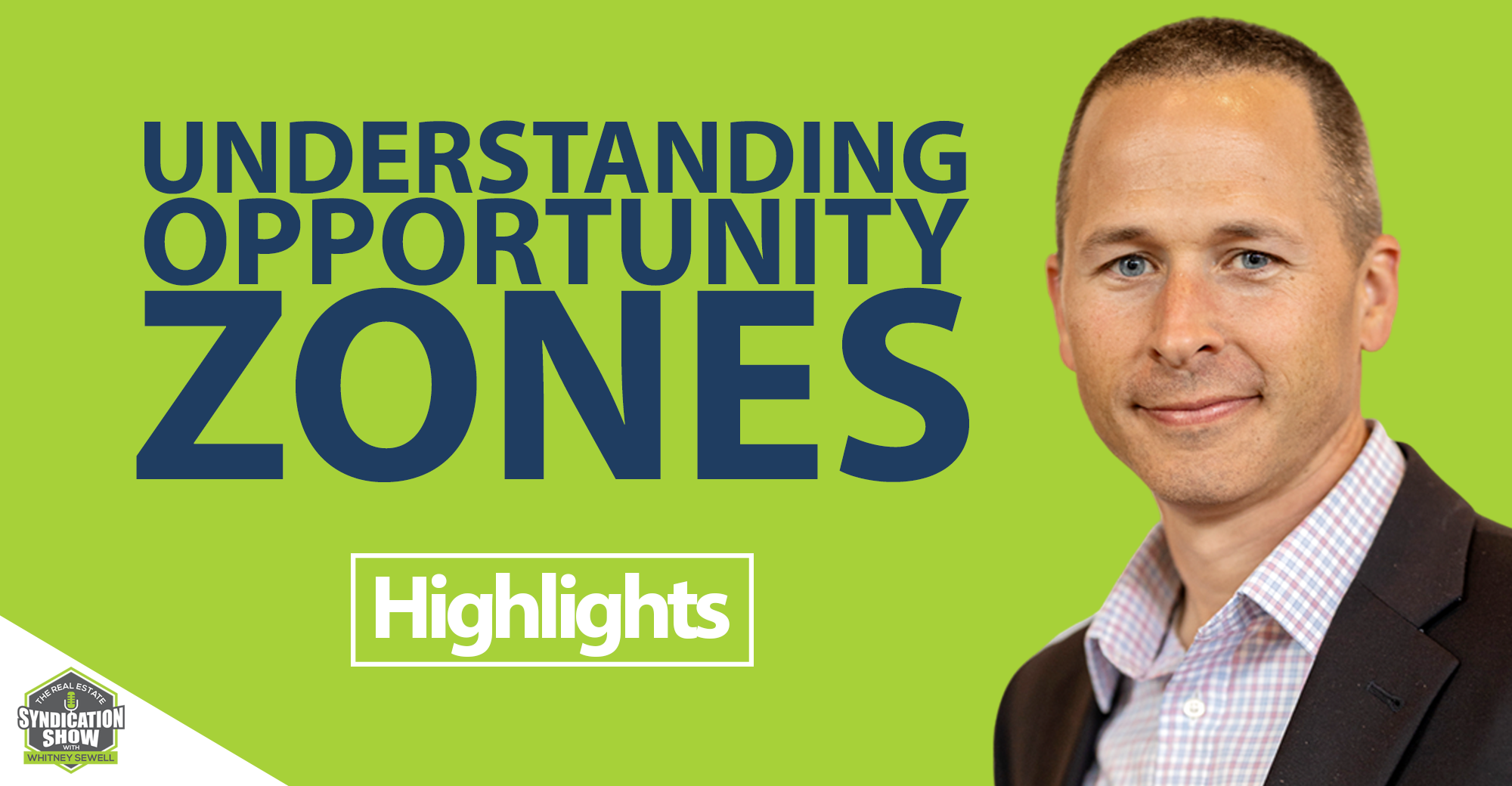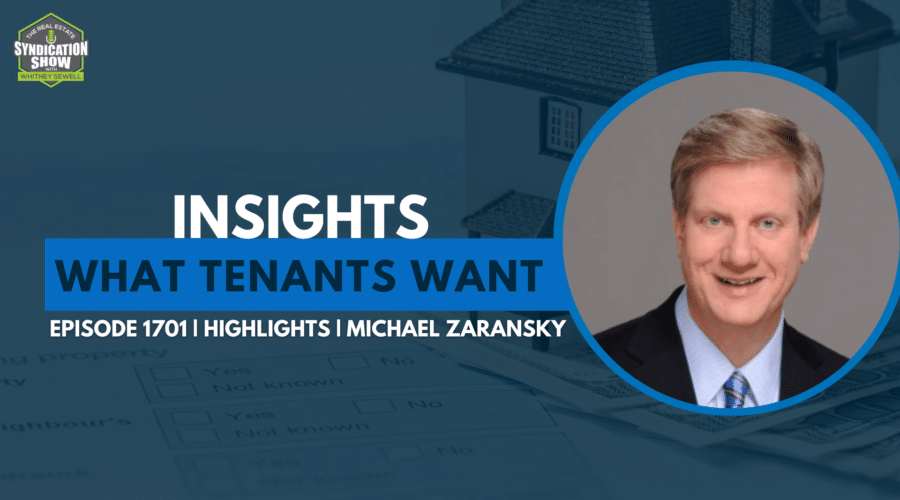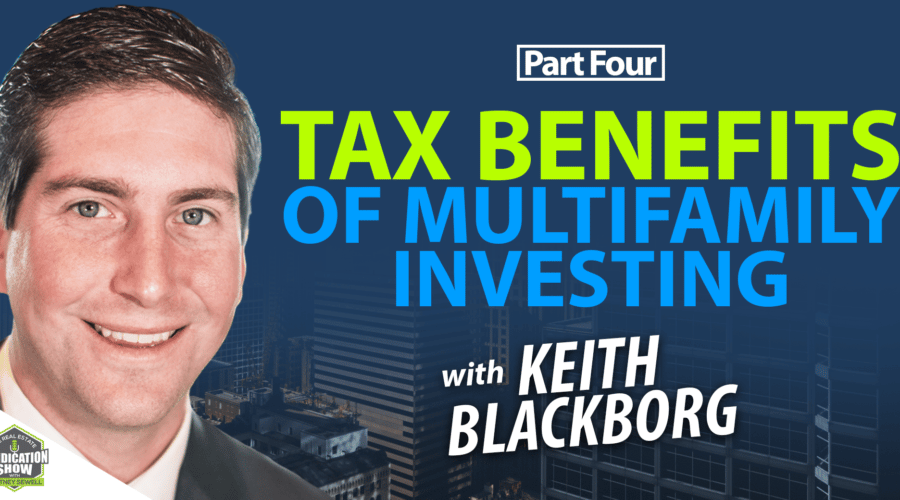
What are qualified opportunity zones? And what are the benefits of investing in these zones? We put the focus on this in our #Highlights episode today as we feature our conversations again with real estate entrepreneurs Andrew Greer and Matthew Ryan.
Watch the episode here:
Listen to the podcast here:
Andrew explains why a qualified opportunity zone is the best thing that has hit the real estate industry and shares some tips on how to acquire assets that are cash flow-generating efficiently. Meanwhile, Matthew shares the tools for finding an opportunity zone and tackles the risks in investing in one versus value-added multifamily. Click the play button now to learn more about qualified opportunity zones and how you can take advantage of those!
Key Points From This Episode:
- Andrew defines what qualified opportunity zones are.
- There are about 8,700 census districts out there that are labeled as qualified Opportunity Zones.
- What are the benefits of investing in a qualified opportunity zone?
- Matthew talks about his background and focuses on real estate.
- Matthew shares that Re-viv is focused on an opportunity zone fund that they have formulated.
- Why we should be looking into opportunity zones and why that’s important?
Tweet This!
“Qualified Opportunity Zones are only the coolest thing that’s ever happened in real estate in my opinion. There are about 8,700 census districts out there that are labeled as qualified Opportunity Zones. Meaning if investors come in and invest capital gains either from short-term capital gains or long-term capital gains, they can develop these properties and receive tax benefits that turn out phenomenal.” – Andrew Greer
“For one, the substantial improvement clause is going to take a lot of your value-add guys out. I know a lot of syndicators are focused on value-add. You’ve got to hit that substantial improvement. You’re looking at very heavy capital infusion projects or roundup development. Those are the two key things to understand.” – Matthew Ryan
“The benefit is once you leave after the ten-year period, opportunities, and investment, you pay zero capital gains on that new appreciation. It is a deferral as well as there’s zero tax on the gain of the new investment. It’s got a little bit more flexibility and a better tax benefit than 1031.” – Matthew Ryan
Links Mentioned in Today’s Episode:
WS285: Developing Qualified Opportunity Zones with Andrew Greer
WS207: Understanding And Revitalizing Opportunity Zones with Matthew Ryan
About Andrew Greer

Andrew Greer is a real estate developer and investor focused on building long-term investment properties. Having started in single-family home development and entitlement Andrew moved towards multi-family investments to create long-term assets for himself and his investors.
Focusing the majority of his effort in the San Diego market Andrew has sought after development opportunities that provide builder incentives for density and parking while focusing on creating the highest and best value for his investors His asset management company is currently focused on acquiring Qualified Opportunity Zone investments and developing them for long term wealth preservation and growth.
About Matthew Ryan

Matt’s experience spans ten years as an entrepreneur: launching his first company out of the recession in 2009 to capitalize on the growing opportunities in energy efficiency and green building within the construction sector.
Pivoting to real estate after making his first investment project in 2013. Matt has compiled a 30% IRR on all investment projects while building a personal portfolio worth over $2 million, handling all facets of the transaction: broker, property management, and general contractor all while positioning Re-viv to become the market leader in community revitalization efforts.
Full Transcript
EPISODE 1351
[INTRODUCTION]
Whitney Sewell (WS): This is your Daily Real Estate Syndication Show and I’m your host, Whitney Sewell. Today is a Highlights show that’s packed with value from different guests around a specific topic.
Don’t forget to like and subscribe but also go to LifeBridgeCapital.com where you can sign up to start investing in real estate today. I hope you enjoy the show!
[INTERVIEW 1]
WS: Our guest is Andrew Greer. Thanks for being on the show, Andrew.
Andrew Greer (AG): Thanks for having me on.
WS: We’ve had a few guests talk about qualified Opportunity Zones, but I’d love for you to elaborate on what that is, and then let’s get into some of the limitations that you referred to as well.
AG: Qualified Opportunity Zones are only the coolest thing that’s ever happened in real estate in my opinion. There are about 8,700 census districts out there that are labeled as qualified Opportunity Zones. Meaning if investors come in and invest capital gains either from short-term capital gains or long-term capital gains, they can develop these properties and receive tax benefits that turn out phenomenal. The first benefit is if you hold them for five years, you receive a 10% reduction on the basis of your actual taxes. Mind you, they’re deferred the whole time that you’re in there too thus far. In year seven, it drops by 15%. There is a hard date, December 31st, 2026 where you have to pay your taxes that have been deferred but at this point, you would have reduced 15% off of your actual tax basis.
Pay that off after holding it until year ten and past any appreciation. Any profit over that is 100% tax-free. It is 100% tax-free. You don’t have to sell at year ten. You have until 2046 to sell. You’re basically sitting there, you’re going to get all of your principal and all of your profits back out on the project whenever you sell it. It’s a huge home run. One of the limitations is that you have to increase the basis of the property. Essentially, any of the improvement value on the property by 100%. That’s why it lends itself greatly to developers to go in and develop these projects because you have to meet that demand and you have to meet that demand by month 31 of owning the project. I could give you a ton of exemptions on how you get around that, but that’s a general idea.
WS: The rule is by month 31, but you’re saying there are exceptions.
AG: If you got held up on permitting, you could do a municipality exemption and they’ll allow you to do it. As long as you’re going on that path, you’re going to be able to get past it.
WS: You have to increase the basis by 100%. How hard is that to do?
AG: It’s not that easy. Definitely, a lot of our projects are going to have a basis of around $1 million to $2.5 million. We have to have the construction of essentially $1 million to $2.5 million more on the property. We’ve also seen that they’re going to allow our permit fees, our consulting fees, and all of that to go towards that value. In California, that makes it a lot cheaper because our permit fees and our consultant fees on this project are over $1 million. It doesn’t kill the deal because of that. It makes it easier and there’s no way to get around that in San Diego. Payment fees, they take their money every single time.
WS: I was thinking about having to be 100% basis increasing by month 31. You’re going to have your ducks in a row to be able to make that happen. I would imagine you know your game plan, you know who your contractors are going to be pretty quickly so you can get this ball rolling. Is there any pushback as far as not being able to get it done or what’s going to happen if you don’t get it done? Is the city coming and saying, “That doesn’t look like this is going to happen as you all thought?” How closely monitored are some of those things?
AG: It’s all self-reported to the IRS. With the exemptions and everything that’s in there, if you can show in it, no one’s been through it yet because it hasn’t even been around for 30 months. No one’s even run into the issue. We’ll find out. If you’re going down that path, the way we all understand it is that they will give you the exemption. The other thing that’s nice, after 30 months, you don’t have to be completed. You just have to have spent that much. It makes a lot of it easier because it’s essentially impossible to do that with most of our projects. To be guaranteed done and the word guaranteed doesn’t exist in my vocabulary.
[INTERVIEW 2]
WS: Our guest is Matthew Ryan. Thanks for being here, Matthew.
Matthew Ryan (MR): It’s my pleasure.
WS: Matt’s experience spans ten years as an entrepreneur. He launched his first company out of the recession in 2009 to capitalize on the growing opportunities in energy-efficient and green building within the construction sector. Pivoting to real estate after making his first investment project in 2013, Matt has compiled a 30% IRR on all investment projects while building a personal portfolio worth over $2 million. He’s handling all facets of the transaction: the broker, property management, and general contractor, all while positioning re-viv to become the market leader in community revitalization efforts. Matt, thanks for being on the show and providing your experience and expertise. I’m looking forward to this. Give the readers a little bit more about your background and what your focus is.
MR: Reiterating construction, energy efficiency, and green building was an exciting part of my career. Being trained in this field of building science, which was very much about comfort, air quality, energy efficiency, and durability of structures. It was a great experience. What I enjoyed in contracting, I saw an opportunity to take that knowledge and expertise and parlay it into real estate investing. Re-viv is focused on an opportunity zone fund that we’ve formulated. We’re looking to capitalize on the minimum co-living projects in the multi-family sector. We have focused on the East Bay market in Oakland as well as parts of San Jose. We’re rounding out our capital raise and getting ready to place the capital that we raised in the first quarter and looking to raise some more in the second quarter.
WS: Let’s go into that a little bit. You said that you’re focused on the opportunities on funds, is that right?
MR: Opportunity zones, qualified opportunity zones, there are a lot of different names for it, but it was under the Tax Cuts and JOBS Act. It was a provision in the Tax Code that’s created a pretty substantial tax referral strategy very similar to 1031 exchange.
WS: Give us some benefits why we should be looking into opportunity zones and why that’s important and then we’ll go into some more details of the process that you’re going through.
MR: Specifically, investors who have a large capital gain. It happens all the time in real estate. You’ve got large paper equity that you’re sitting on, a substantial profit that you’re sitting on. What do you do? You see the questions on BiggerPockets. Everyone who’s been in real estate hopefully gets to that point. 1031 exchange, have you completed one before?
WS: No, I have not.
MR: It’s tough. You have 45 days to identify three assets and you have to close on one of those three in 180 days. With opportunity zones, you’ve got a little bit more flexibility. You’ve got 180 days to place your money, that capital gain into a qualified opportunity fund. The qualified opportunity fund then has to go up and purchase the asset and make substantial improvements. There’s a substantial improvement clause in there within 30 months. The way that the substantial improvement clause works, you buy a property for $1 million and you assign $600,000 to the builder, and $400,000 to the land. You need to improve that building by $600,000. Once you do that, you defer your original capital gain up until the year 2026. There’s what they call a step-down basis. It can get a little technical at this point. Let’s say you had a $100,000 gain that you deferred into an investment. In 2026, you would pay only 85% of the original tax that you would be obligated to, had you not looked into a qualified opportunity fund.
WS: We’re going to pay how much?
MR: You pay 15% less of your original tax liability. Your $100,000 investment, let’s say you owe $28,000 on that. You’d only be taxed on $85,000 as opposed to $100,000. The other benefit is at the exit because if you keep the investment in the opportunity zone investment or fund for ten years, you pay zero capital gains on exit. It’s not like 1031 where you have to keep rolling over. You’re still trying to avoid that game with a 1031 and eventually, the government is going to get their money. The benefit is once you leave after the ten-year period, opportunities, and investment, you pay zero capital gains on that new appreciation. It is a deferral as well as there’s zero tax on the gain of the new investment. It’s got a little bit more flexibility and a better tax benefit than 1031. It does come with risks. Your census tracks, they’ve been designated as distressed areas. If you google opportunity zones and you look at some of those in your state, some of these are in areas that are already prominent up-and-coming areas.
WS: How do we find an opportunity zone or how do we know that that’s something we should be pursuing? Is it something everybody should be pursuing?
MR: For one, the substantial improvement clause is going to take a lot of your value-add guys out. I know a lot of syndicators are focused on value-add. You’ve got to hit that substantial improvement. You’re looking at very heavy capital infusion projects or roundup development. Those are the two key things to understand.
WS: When you say the value-add guys, if we’re looking to come in and put $5,000 gain to do a value-add, that’s not going to be near enough? Is that what you’re saying?
MR: You’re going to have a tough time hitting that $600,000 on that million-dollar project. You’re going to spend a lot of money per door. It takes it out. The intent of the program was job creation. Development projects, typically they’re going to yield more jobs. That is the intent and that’s why they had the substantial improvement clause. The development piece plays are going to make the most sense. Heavy gut rehabs or maybe you’ve got a multi-family project that you’ve got a portion that you can develop. You’ve got some vacant land. Those also work well. It is a little restrictive as far as the type of investments you can make. As far as getting involved, just google opportunity zones in your state. Every state now has its own mapping tool. You can take an address and look to see if it’s an opportunity zone.
WS: We can focus on that area and try to find distressed properties or vacant land, something in that area.
MR: That’s very common. I know a lot of people use various tools, CoStar, ProspectNow. I know CoStar has an overlap tool for opportunity zones. They have a map overlay. There have been at least two or three new software launches that I’ve seen in the marketplace. People are coming in with these tools. I’d still say find the free one. Go to Google, go to your state website, and more likely, you’ll be able to find something, for sure.
[END OF INTERVIEW]
[OUTRO]
Whitney Sewell: Thank you for being a loyal listener of The Real Estate Syndication Show. Please subscribe and like the show. Share with your friends so we can help them as well. Don’t forget to go to LifeBridgeCapital.com where you can sign up and start investing in real estate today. Have a blessed day!
[END]
Love the show? Subscribe, rate, review, and share!
Join the Real Estate Syndication Show Community:




